2020 Toyota Tundra Repair, Service & Tires
Get Started
Complete Auto Care for Your 2020 Toyota Tundra
-
TIRES FOR YOUR 2020 Toyota Tundra View Tire Info GET TIRE PRICING
-
REPAIR FOR YOUR 2020 Toyota Tundra View Repair Info SCHEDULE REPAIR
-
MAINTENANCE FOR YOUR 2020 Toyota Tundra View Maintenance Info SCHEDULE MAINTENANCE
-
OFFERS FOR YOUR 2020 Toyota Tundra Limited Time Tire Offers VIEW ALL COUPONS
2020 Toyota Tundra Tires
Recommended Tires | Tire Information
2020 Toyota Tundra Tires Sizes, Speed Ratings, and Inflation
Not sure about your 2020 Toyota Tundra tire size? Use the following chart to find information on tire size, speed rating, and inflation.
| Trim Level | Speed Rating | Inflation in PSI F/R | Tire Size |
|---|---|---|---|
| 2020 Toyota Tundra SR5* | H | 30 PSI/33 PSI | P275/55R20 |
| 2020 Toyota Tundra SR5* | T | 30 PSI/33 PSI | P255/70R18 |
| 2020 Toyota Tundra SR5* | T | 30 PSI/33 PSI | P275/65R18 |
| 2020 Toyota Tundra SR | T | 30 PSI/33 PSI | P255/70R18 |
| 2020 Toyota Tundra TRD Pro | T | 30 PSI/33 PSI | P275/65R18 |
| 2020 Toyota Tundra Platinum | H | 30 PSI/33 PSI | P275/55R20 |
| 2020 Toyota Tundra Limited* | T | 30 PSI/33 PSI | P275/65R18 |
| 2020 Toyota Tundra Limited* | H | 30 PSI/33 PSI | P275/55R20 |
| 2020 Toyota Tundra 1794 Edition* | T | 30 PSI/33 PSI | P275/65R18 |
| 2020 Toyota Tundra 1794 Edition* | H | 30 PSI/33 PSI | P275/55R20 |
|
2020 Toyota Tundra SR5* Speed Rating: H Inflation F/R: 30 PSI/33 PSI |
|
2020 Toyota Tundra SR5* Speed Rating: T Inflation F/R: 30 PSI/33 PSI |
|
2020 Toyota Tundra SR5* Speed Rating: T Inflation F/R: 30 PSI/33 PSI |
|
2020 Toyota Tundra SR Speed Rating: T Inflation F/R: 30 PSI/33 PSI |
|
2020 Toyota Tundra TRD Pro Speed Rating: T Inflation F/R: 30 PSI/33 PSI |
|
2020 Toyota Tundra Platinum Speed Rating: H Inflation F/R: 30 PSI/33 PSI |
|
2020 Toyota Tundra Limited* Speed Rating: T Inflation F/R: 30 PSI/33 PSI |
|
2020 Toyota Tundra Limited* Speed Rating: H Inflation F/R: 30 PSI/33 PSI |
|
2020 Toyota Tundra 1794 Edition* Speed Rating: T Inflation F/R: 30 PSI/33 PSI |
|
2020 Toyota Tundra 1794 Edition* Speed Rating: H Inflation F/R: 30 PSI/33 PSI |
* Note: these models have different tire sizes depending on vehicle options.
Recommended Tires for Your 2020 Toyota Tundra
What tires are best for a 2020 Toyota Tundra? Check out the following tire brands and types.
 ALENZA AS ULTRA
ALENZA AS ULTRA
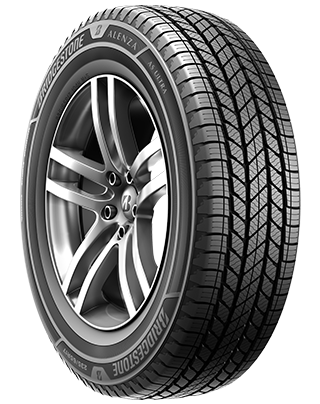
- No warranty
- All-Season
- Light Truck Tires
 Dueler A/T Revo 3
Dueler A/T Revo 3
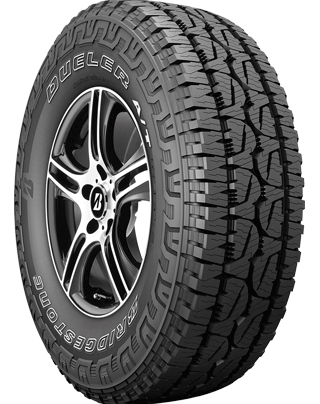
- Platinum Pact Limited Warranty
- All-Season
- Light Truck Tires
 Blizzak DM-V2
Blizzak DM-V2
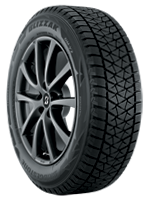
- No warranty
- Winter
- Winter
 DriveGuard Plus
DriveGuard Plus
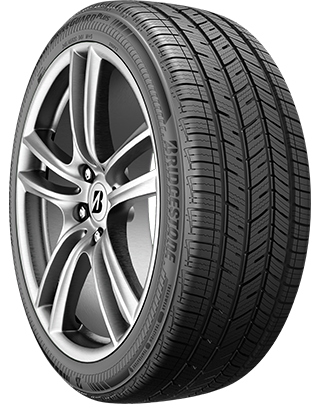
- Platinum Pact Limited Warranty
- All-Season
- Performance
 Dueler H/T 684 II
Dueler H/T 684 II
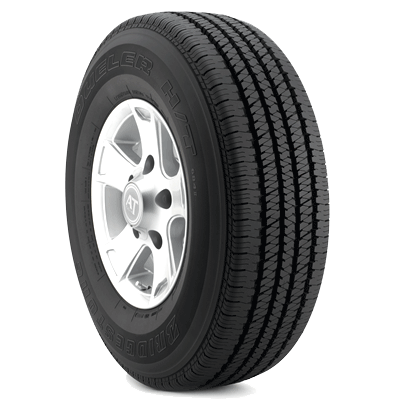
- Platinum Pact Limited Warranty
- All-Season
- Light Truck Tires
 Dueler A/T RH-S
Dueler A/T RH-S
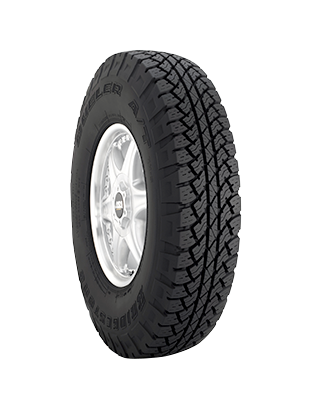
- Platinum Pact Limited Warranty
- All-Season
- Light Truck Tires
 Dueler H/L Alenza
Dueler H/L Alenza
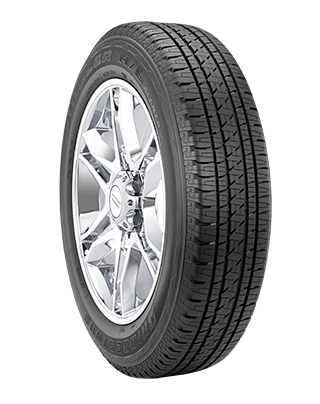
- Platinum Pact Limited Warranty
- All-Season
- Light Truck Tires
 Dueler H/T 685
Dueler H/T 685
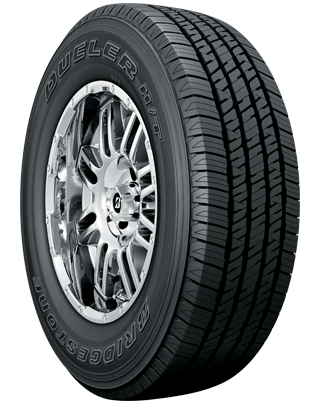
- No warranty
- All-Season
- Light Truck Tires
 Dueler H/L Alenza Plus
Dueler H/L Alenza Plus
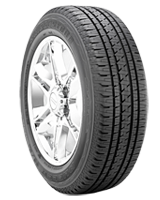
- Platinum Pact Limited Warranty
- All-Season
- Light Truck Tires
 Destination A/T2
Destination A/T2
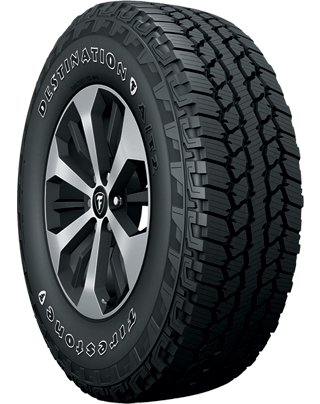
- Gold Pledge Limited Warranty
- All-Season
- Light Truck Tires
 Destination LE3
Destination LE3
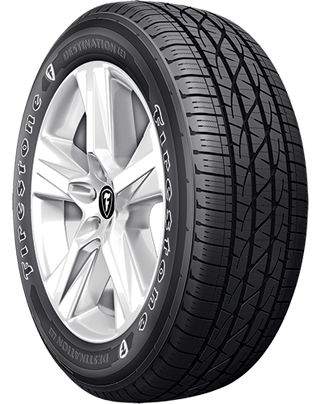
- No warranty
- All-Season
- Light Truck Tires
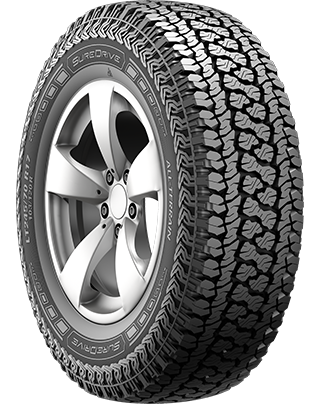
- No warranty
- All-Season
- Light Truck Tires
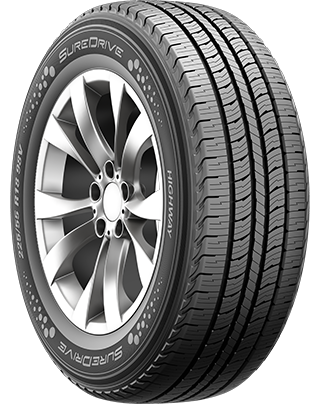
- No warranty
- All-Season
- Light Truck Tires
 PROXES ST III
PROXES ST III
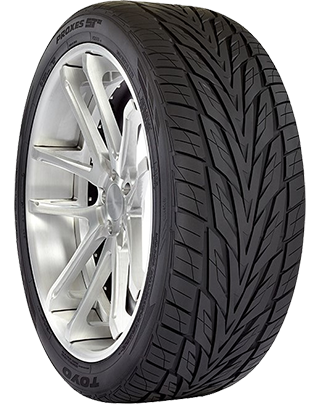
- No warranty
- All-Season
- Light Truck Tires
 OPEN COUNTRY R/T
OPEN COUNTRY R/T
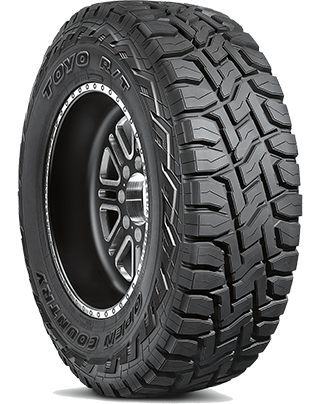
- No warranty
- All-Season
- Light Truck Tires
2020 Toyota Tundra Tire Information
Other than getting the proper tire size, there are a couple of other factors to consider when buying Toyota Tundra tires like where and how you drive, and what tire brand you trust most. Think about where you live (countryside vs. city vs. mountains) and the kind of unexpected weather you're likely to experience when evaluating your driving conditions. It's not uncommon for drivers in states that experience all four seasons to buy more than one set of tires. one set for winter, one set for summer. Other drivers buy one set of all-season tires instead. That way they don't have to return to the tire shop and their vehicle is always ready for sun, rain, and light snow!
Your personal driving style is the next factor to consider. If you're a big off-roading fan who forges paths where others can't, you have very different needs than a long-distance commuter who sticks to the highway. Visit your local Firestone Complete Auto Care for help selecting the tire that's right for you, or get started by browsing tires that fit your Toyota Tundra.
Toyota Tundra Installation and More
Firestone Complete Auto Care has been a leading tire provider for more than a century. We're your tire shop and a complete service center for tire installation, maintenance, repair, rotation, and alignment! Shop 2020 Toyota Tundra tires online and schedule an installation appointment.
Questions About 2020 Toyota Tundra Tires
-
Why does Toyota tire inflation matter? Even a tiny decrease in tire pressure could impact your safety and fuel economy. Maintaining proper tire pressure can help increase fuel economy, improve braking time, and boost tire lifespan.
-
What do the tire sidewall numbers mean for my Toyota Tundra? Your tire sidewall gives you information about load carrying capacity, speed rating, treadwear, traction, and tire size. Talk to one of our tire technicians to learn how to read the numbers on your tire!
-
Is there an easy way to check Toyota tire tread depth? Stay on top of your tire tread depth to help avoid a dangerous drive. You can check tread depth with a penny. Hold the penny so that Abraham Lincoln is facing you, then place your penny into a tread groove upside down. If you can see the top of Abe’s head, your tread is shallow and it might be time for new Toyota Tundra tires. Grab a penny. Hold the so that Abe Lincon's head is facing you and his hair is pointing toward the ground. Then, place the penny into a tread groove. If you can see the top of Abe’s head, your tread is shallow and it might be time for new Toyota Tundra tires.
Types of 2020 Toyota Tundra Repairs
Want more details? Choose a service below to read more about Toyota Tundra repairs at Firestone Complete Auto Care.
2020 Toyota Tundra Repair Information
No driver looks forward to car repairs. We’re here to change that, though. At Firestone Complete Auto Care, we want to make car repair painless and hassle-free. Bring your 2020 Toyota Tundra in for repair services and our skilled repair technicians will get your Tundra back on the road. We’ll start by assessing what repairs may be needed, and we’ll provide you with a detailed explanation of what we recommend. If a repair isn't necessary, we won't recommend it.
How Much Does Toyota Tundra Repair Cost?
Several factors can affect the cost to repair your 2020 Toyota Tundra, including the type of repair, the cost of any replacement parts, how much labor the repair will take, and your locale. No matter what state you’re in, be sure to look through our offers and online coupons for repairs.
A few different aspects can influence repair costs for your 2020 Toyota Tundra, like
Questions About 2020 Toyota Tundra Auto Repairs
-
Do I need to follow Toyota's maintenance schedule? The cheapest 2020 Toyota Tundra repair is the one that isn’t necessary in the first place! Staying up-to-date with your car’s scheduled maintenance services is a great way to keep future repair costs low.
-
What's wrong if something feels 'off' in my Toyota? No, we’re not talking about finding the best jams on the radio! You know your car best, and you’re the first person who will notice if something doesn’t feel right (like new smells, sights, or sounds coming from your car). If you sense that something is 'off,' stop in for a Courtesy Check to have these symptoms checked out ASAP. Early action could help you prevent Toyota Tundra repairs.
-
Do I have to get the repairs you recommend for my Toyota? Trust is more than just a saying on the wall. It’s a window underneath it. That’s why we won’t recommend services or repairs for your 2020 Toyota Tundra unless we think they’re vital to your safety on the road.
Brake Repair for Your 2020 Toyota Tundra
You might have a strong and reliable engine in your Toyota Tundra. But if you can't stop it, then it's scrap metal. Don't wait if you're experiencing brake squeaks or a loss of braking power. Unresponsive brakes make it tough to give the road your best. What's more, waiting for things to figure themselves out can result in more damage to your brakes and your wallet. Go to your local Firestone Complete Auto Care for 2020 Toyota Tundra brake repairs. Our brake repair services include pad/shoe replacement, brake rotor/drum refinishing, brake fluid exchange/bleeding, and brake caliper and wheel cylinder installation.
Questions About Your Toyota Tundra Brakes
-
Why is my Tundra shaking as I brake? Faulty brake calipers, worn brake pads or rotors, loose or worn suspension parts, and warped rotors can cause your Tundra to shake during braking. If you’re experiencing odd brake behavior, schedule a free brake inspection at a nearby Firestone Complete Auto Care.
-
How often do I need to replace my Tundra brake pads? You can usually get around 30,000 to 40,000 miles out of your brake pads, but how and where you drive your Tundra can affect this. Hauling large loads or riding your brakes can shorten their lifespan, while smoothly braking and mostly sticking to highways can help your brake pads last longer.
-
Does brake fluid leak when the car is off? Your Tundra brake system is a closed hydraulic system, which means that the brake fluid should not leak out of the system under normal circumstances. However, over time, the various components of the brake system can wear out or become damaged, which can cause brake fluid to leak out of the system.
When to Get Toyota Tundra Drivetrain Repairs
Drivetrains for front, rear, and all-wheel-drive and 4WD vehicles are quite different, so you don't want to go to just anyone for drivetrain repair. You want to go to Firestone Complete Auto Care. We can fix many 2020 Toyota Tundra drivetrain components Your Toyota Tundra may need driveshaft attention if you feel heavy vibrations in your floorboards, clunks when shifting, resistance when turning, or vibration as your vehicle accelerates.
2020 Toyota Tundra Drivetrain Questions
-
What are the symptoms of a damaged Toyota drivetrain system? Hear noises toward the back of your Toyota Tundra? See fluid leaking? Having issues turning? These could all be signs of drivetrain damage you don't want to ignore. Take action quickly to catch repairs or replacements before something more severe happens.
-
Why is my Tundra malfunction indicator light (MIL) on? Engine problems, transmission problems, faulty sensors, electrical issues, misfire issues, and connector problems could all cause your Tundra’s malfunction warning light, or better known as the check engine light, to illuminate.
-
How concerning is a drivetrain malfunction in my Tundra? Don't ignore a drivetrain malfunction in your Tundra. As soon as you notice a problem, have it checked by a professional mechanic to diagnose the issue and carry out any necessary repairs. Driving with a faulty drivetrain is risky and may further damage your Tundra.
2020 Toyota Tundra Wheel Alignment
With an alignment service, adjustments are made to your Toyota Tundra’s suspension system, which connects the wheels with the rest of the vehicle. During the service, calculated changes are made to the angles of your tires. This is so that your tires hit the road at an optimal angle for your vehicle’s performance — just as Toyota intended. When you bring in your 2020 Toyota Tundra, we’ll perform an alignment check first. After that, we can adjust your wheel alignment angles until they match Toyota’s recommended measurements.
Toyota Tundra Alignment Questions
-
Are there road conditions that can hurt my Toyota Tundra alignment? Hitting a pothole or curb can alter your wheel alignment. So can general wear and tear over time.
-
How often should you get a wheel alignment for your Tundra? It’s usually suggested you check your alignment about every 6,000 miles or 6 months (whichever occurs first). Still, you should reference your Tundra owner’s manual for Toyota's recommended interval.
-
Do you need to get your Tundra wheels aligned? While you don’t necessarily need to get an alignment when putting new tires on your Tundra, it’s still a good idea. Ensuring your wheels are properly aligned can help support optimal handling, tire wear, and fuel efficiency.
2020 Toyota Tundra Engine Repair
If your 2020 Tundra engine needs repairs, our expert techs will let you know what needs to be done and why before they get started. We make recommendations, but you make the final decision. If a repair isn’t urgent right now, we’ll let you know. But if immediate repairs are necessary for your safety, we’ll make sure that's clear, too. We seek to give you all the info you need to make a smart decision about our services. Choose Firestone Complete Auto Care for Toyota Tundra engine repairs and you can drive easy knowing that we use Toyota-approved parts and fluids — cambelt, valve guide seal, fuses, or another part.
Engine Q&A 2020 Toyota Tundra
-
Why does my Tundra’s check engine light come on when I start it? It's okay if your check engine light comes on when you first start your vehicle. This is a sign that your vehicle is testing its circuits. The light should go off shortly. Bring your vehicle in if it doesn't.
-
Why is my Toyota Tundra making engine noise? Strange engine sounds can be a sign something’s off in your Toyota Tundra. Knocking or tapping could be a symptom of low oil. A high-pitched whistle could signal an intake leak or misaligned belt. Squealing can be traced back to a loose fan belt, and grinding might be a sign of brake problems rather than engine issues.
-
What could damage a Toyota engine? Some driving habits are not so great for your engine. These include driving on a near-empty gas tank, flooring the gas pedal while the car is in Park, or accelerating too quickly, too soon. Protect your engine’s performance and efficiency by distancing yourself from these habits.
2020 Toyota Tundra Tire Repair
If your 2020 Toyota Tundra is in need of a tire inspection or possible flat tire repair, Firestone Complete Auto Care has your back. There’s a chance your tire could be plugged and patched (rather than replaced). Our technicians can inspect your tire and let you know if it is safe to repair. To start, we’ll consider the location of tire damage, the type of issue, the size and scope of the damage, and the amount of wear on your tires.
If we determine that your 2020 Toyota Tundra tire can be safely repaired, we'll follow three basic steps to repair it: (1) Remove the tire from the wheel for inspection and repair, (2) use a filler to close up the puncture (this is to keep moisture from getting in), and (3) seal the inner liner with a repair unit to prevent air loss.
Toyota Tundra Tire Repair Questions
-
How soon should I have my flat tire repaired? Driving on a flat tire is not a good idea. Your Tundra engine will keep running with a flat tire, but you could damage your wheel by continuing to drive on a flat.
-
Will a temporary sealant fix my Toyota's flat tire? Temporary sealants will solve your problem… for a little bit. If you’ve seen temporary or emergency tire sealant before (it usually comes in a can), it can be tempting to turn to this as a solution for your flat tire. Keep in mind that these fixes could buy you some time to get to Firestone Complete Auto Care for a proper repair, but they could also cause some harm in the process (for example, damage to your TPMS). Plus, using a product like this could void your tire warranty.
-
Why do the tires on my Tundra keep losing air? If your Tundra tires are always losing air, you may have a puncture, damaged wheel, or leaking valve stem.
Maintenance for Your 2020 Toyota Tundra
You want your Toyota Tundra to last as long as possible. If you put in the effort to keep up with proper maintenance, you could hit 200,000 miles (or beyond!) in your Tundra.
2020 Toyota Tundra Maintenance Schedule
What is the manufacturer recommended maintenance schedule for a 2020 Toyota Tundra? Find maintenance info for your vehicle.
About 2020 Toyota Tundra Scheduled Maintenance
Instead of waiting for an issue to arise with your Tundra, you can stay ahead of problems before they even begin. It’s as easy as following the recommended maintenance schedule that’s been written specifically for your 2020 Toyota Tundra! This recommended maintenance schedule is written by the auto manufacturer, Toyota themselves. Driving conditions, climate variations, and other variables can affect which scheduled maintenance services you’ll need; in most cases, though, recommended maintenance will consist of services like oil changes, tire rotations, brake pad replacement, filter changes, and fluid checks and exchanges. Staying on track with routine service appointments can help your Tundra perform better, increase your vehicle safety, and help you avoid expensive repairs caused by 2020 Toyota Tundra problems later.
Overview of Essential Toyota Tundra Maintenance Needs
Bring your 2020 Toyota Tundra to Firestone Complete Auto Care for factory-recommended maintenance services and a skilled technician will start the appointment with a Courtesy Check. This Courtesy Check can establish a baseline of what may need to be addressed during your service appointment. Every Courtesy Check will include a visual inspection of your Tundra. We’ll check your head and tail lights, fluid levels, filters, tires (and their alignment!), and windshield wiper blades. We’ll also perform a free battery check to determine your battery’s charge level.
Firestone Complete Auto Care is your spot for 2020 Toyota Tundra maintenance. Don’t wait until something goes wrong with your car. Visit your nearest location for proactive maintenance today.
2020 Toyota Tundra Maintenance Q&A
-
What should I do after hitting a pothole in my Toyota Tundra? Watch out for pothole damage. If your 2020 Tundra is pulling to one side or the other, your tires or suspension system could be calling out for help.
-
When does my Toyota Tundra need high mileage oil? If your Toyota Tundra has ticked past 75,000 miles, consider switching to high mileage oil at your next oil change to give your engine what it needs to go another 75,000 (or more!). High mileage oil: make it a high priority!
-
Why are my Toyota dashboard lights on? Because there might be a problem under the hood. Those warning lights are there for a reason! As soon as you notice that one’s illuminated, take your Toyota Tundra to Firestone Complete Auto Care so you can address any small problems long before they worsen.
Battery Size & Replacement for 2020 Toyota Tundra
Researching battery replacements for your Toyota Tundra?
| Battery | Engine | Warranty | Cold Cranking Amps | |
|---|---|---|---|---|
| 24F-3 | V8/5.7L | Replacement 24 months | Performance months | 650 |
| 24F-6 | V8/5.7L | Replacement 36 months | Performance months | 750 |
| 24F-RP | V8/5.7L | Replacement 48 months | Performance months | 750 |
2020 Toyota Tundra Batteries
On average, auto batteries last anywhere from three to five years. Don’t get stranded by your Tundra’s car battery. Replace it regularly instead! Look out for symptoms of a faulty car battery. A lagging starter, a blinking battery or check engine light, bloated battery case, corroded battery posts, or weak lights can all be signs that your battery is on its last leg.
Plus, at Firestone Complete Auto Care, we’ll test your battery for free. Stop by for a free battery test and, if needed, get your Toyota Tundra a replacement battery. Automotive batteries are just one of our many areas of expertise. Our technicians are familiar with Toyota-specific recommendations for Tundra car batteries’ reserve capacities and cold cranking amps. Get help identifying the type and size of battery that fits your car perfectly, and schedule a weekday or weekend battery replacement service for your car.
Commonly Asked Toyota Tundra Battery Questions
-
Why doesn’t my Toyota Tundra battery stay charged? A battery that won't hold a charge is almost as good as dead. The battery might be old. Or, you may have a habit of leaving your car doors open and the lights on overnight. Stop by for a free battery test at your local Firestone Complete Auto Care to learn more about the state of your battery.
-
What is the average lifespan of a car battery? The typical 12-volt car battery may last three to five years, depending on the type of battery, the driving conditions, and how well the battery is maintained.
-
What is the white, crusty stuff around my Tundra’s battery post? The white, crusty stuff that can accumulate around Tundra car battery terminals is called corrosion. It is caused by a chemical reaction between the battery acid and the air, which creates a white, powdery substance that can build up on the terminals over time. Corrosion can interfere with the flow of electricity between the battery post and the car's electrical system, sometimes leading to poor electrical performance, difficulty starting, and even premature battery failure.
2020 Toyota Tundra Oil Changes
Toyota recommends having your 2020 Toyota Tundra’s motor oil changed at regular intervals. No matter the mileage, your Tundra may need its oil changed ASAP if your check engine light is on, you hear knocking sounds coming from the engine, sense an oil smell in the cabin, or notice an unusual amount of exhaust. You might need an oil change more frequently than what’s recommended by Toyota if you regularly haul heavy loads, frequent dusty roads, enjoy off-roading, or go at low speeds on long distance trips.
Your local Firestone Complete Auto Care has the right 2020 Toyota Tundra motor oil: either synthetic or conventional. Consult Toyota's recommendations to select the right 2020 Tundra oil and talk with a teammate to learn more about our oil options: Quaker State® Advanced Durability™ conventional oil, Pennzoil® High Mileage Vehicle® motor oil, Pennzoil Platinum® Full Synthetic motor oil with PurePlus™ Technology, and Shell Rotella® heavy-duty engine oil. During your oil change service, one of our techs will change your Tundra’s oil, replace and recycle your used oil and filter, check all of your other filters, refill vital car fluids, and perform a courtesy inspection on your entire vehicle. Let the experts take care of your Tundra’s engine by making an oil change appointment today.
2020 Toyota Tundra Oil Change Q&A
-
Why is the oil light on in my Toyota Tundra? If you’re overdue for an oil change, it might trigger your Toyota Tundra oil change reminder light. If the oil pressure light is illuminated, it could be due to low engine oil, a failing oil pump, a malfunctioning oil pressure sensor, or a clogged oil filter.
-
Can I change my Toyota Tundra oil at home? Changing engine oil at home isn’t as simple as it’s made out to be. You’ll have to figure out how to properly dispose of the oil and buy special tools. Having your oil changed professionally can not only reduce the risk of something going wrong during the service, but it’ll also help your car perform smoothly down the road.
-
Why is my Toyota exhaust smoke gray or blue? Your engine could be burning oil due to a leak. It may be time for a pro to take a look. A leak can be caused by a variety of issues including faulty valve seals, blown piston rings, or damaged cylinder walls.
Engine Tune-Up Service for Your 2020 Toyota Tundra
Regular engine tune-ups can optimize your Tundra’s power on the road. Your local Firestone Complete Auto Care offers a range of engine tune-up services for your 2020 Toyota Tundra. The standard Firestone Tune-Up is one service option. The standard Firestone Tune-Up includes new spark plugs (and installation!), a thorough inspection of engine components, and a lifetime parts warranty*. The second service focuses on your Tundra's filters, specifically replacing the air filter and fuel filter. Our third service is a thorough cleaning of the fuel system. During this type of tune-up, we use a three-step process to get rid of harmful varnish, dirt, and carbon deposit buildup in your Tundra’s fuel injectors, throttle body, and throttle plate. This can improve your fuel system’s performance (and therefore, your engine’s performance). Keep in mind that your Tundra's mileage and maintenance history can uniquely impact its tune-up needs. Ask one of our technicians what your vehicle needs, based on your driving habits and your car’s current condition.
*Check with a teammate at Firestone Complete Auto Care for complete terms and conditions regarding warranties.
Common Engine Tune-Up Q&A for 2020 Toyota Tundra
-
When should Toyota Tundra spark plugs be replaced? Replace spark plugs on time or about every 30,000 miles or so. Without the spark of electricity created by spark plugs, your engine doesn’t have the combustion it needs to start — which could leave you stranded on the road. Always replace your spark plugs on time based on Toyota’s recommendations.
-
What do I do if I see a pool of liquid under my Toyota Tundra? Puddles could indicate that your vehicle is leaking coolant, oil, or brake fluid. Ignoring these leaks can lead to permanent engine damage, so address these symptoms ASAP with a tune-up service.
-
How often do Toyota Tundra fuel injectors need to be cleaned? There is no hard and fast rule on how often fuel injectors should be cleaned, and it can vary based on driving habits and fuel type. Some manufacturers may suggest including a fuel system cleaning in your regular maintenance schedule. Or you may need to clean your fuel injectors as needed if you notice signs of a fuel system problem.
2020 Toyota Tundra Suspension Service & Repair
During the first few years you had your 2020 Toyota Tundra, you probably enjoyed a smooth and steady ride. Lately, though, your ride’s been feeling a little bumpy. Perhaps your Tundra feels bouncy, drifts to one side, or makes noise whenever you turn or drive over a speed bump. The first sign of trouble is the best time to bring your 2020 Toyota Tundra in for steering and suspension repairs. We’ll get to the source of your car problems and, if your car needs steering and suspension repairs, we’ll go over the services you need and how much they will cost before we do any work.
Questions About 2020 Toyota Tundra Steering & Suspension
-
Why is my Toyota Tundra bouncing so much? If your shocks or struts are in bad shape, they can’t dampen road bumps like they should. This can cause your Tundra to bounce more than usual.
-
Why does my Tundra front end dip forward when I brake? When you brake, the forward momentum combined with your vehicle's weight sends a lot of force to the vehicle's front end. A bad suspension can cause all that weight and force to push the front end downward.
-
Does treadwear and tire pressure impact my Tundra's steering and suspension? Keeping your tires properly inflated can help reduce strain on the suspension, and also help you notice when you need new tires. A tire that doesn't have an adequate amount of tread can't grip the road or function as well as the manufacturer intended.
A/C Service for Your 2020 Toyota Tundra
Our trained technicians will do what they can to solve your 2020 Toyota Tundra A/C problems. During an A/C performance check, we'll determine the condition of your 2020 Toyota Tundra A/C system to determine whether repair work is needed. We’ll test overall system performance, check for any leaks, and measure the system pressure.
While your 2020 Toyota Tundra’s air conditioner is being serviced, we’ll also do an A/C evacuation and recharge. During this process, a technician will remove the old refrigerant from the A/C system. Next, they will evacuate the system according to Toyota's recommendations. To finish, we’ll add new refrigerant to recharge the A/C system.
Frequently Asked Questions for 2020 Toyota Tundra A/C Systems
-
What’s making my Tundra A/C put out warm air? Maybe your A/C starts cool but then gets warm. Or maybe it never gets cold in the first place. Either way, your A/C troubles could be traced back to a clogged expansion valve, faulty compressor clutch, blown fuse, or leak.
-
What causes A/C system leaks? A/C system leaks are often due to a combination of age and moisture. Rubber seals and gaskets naturally degrade over time, allowing refrigerant to exit and moisture to enter your Tundra's A/C system.
-
Why does my Tundra’s A/C only work when the car is moving? There could be issues with one or more components in the air conditioning or electrical system. Your Tundra may have a faulty cooling fan or low refrigerant.
Transmission Services for 2020 Toyota Tundra
The transmission delivers power from the motor to your wheels so that you can drive at your desired speed. Because your transmission is responsible for converting the right amount of power into the right amount of speed, a tiny transmission issue can take a major toll on your car’s performance. Toyota Tundra transmission problems can present themselves as shifting delays, grinding when accelerating, a feeling of shakiness, or whistling noises or a burning smell coming from beneath the hood. If you ignore Toyota Tundra transmission issues you might notice your fuel economy decrease or discover that your Tundra’s not even driveable. Our expert techs are familiar with 2020 Tundra services and perform them according to Toyota-recommended specifications. As soon as you suspect something’s wrong with your Tundra’s transmission, book an appointment at your local Firestone Complete Auto Care to help keep your engine running at peak performance.
Questions About 2020 Toyota Tundra’s Transmission
-
How often does my Tundra transmission fluid need to be checked? Regularly checking and exchanging your 2020 Tundra’s transmission fluid is one of the best ways to help the transmission system perform. Some technicians would say that between 30,000 and 60,000 miles is a good timeframe for having your Toyota's transmission fluid checked and replaced, but that timeline can vary depending on how your vehicle is used and your manufacturer’s recommendations. The good news is that transmission fluid leaks are affordable to repair and easy to spot.
-
Can transmission fluid leak from my Toyota Tundra? Yes, your Toyota Tundra can develop a transmission fluid leak. As your Tundra ages, parts of the transmission system might wear out or break down, leading to a leak and possible transmission issues. Common causes of transmission fluid leaks include worn seals, a damaged transmission housing, a loose or cracked transmission pan, an overfilled transmission, or faulty transmission lines.
-
Should I avoid driving my Toyota Tundra if there is a transmission fluid leak? Driving with a transmission fluid leak is not recommended. Transmission fluid is essential to the proper operation of the transmission system, and a leak can cause serious problems, including reduced performance, overheating, and potentially transmission failure.
Vehicle Inspection for 2020 Toyota Tundra
Every service performed at Firestone Complete Auto Care includes a multi-point Courtesy Check. To start, one of our technicians will check the battery in your Toyota Tundra to determine how much charge remains. The check will continue with a visual inspection of your Toyota Tundra's windshield wiper blades, lights, filters, fluid levels, belts, hoses, tires, and alignment.
While every visit to your local Firestone Complete Auto Care includes a Courtesy Check, we can also dig deeper and perform a Complete Vehicle Inspection on your 2020 Toyota Tundra if you prefer. During a Complete Vehicle Inspection, we’ll visually check everything that’s on the list for a Courtesy Check. Additionally, we’ll perform an examination (by hand!) of your steering and suspension system, brakes, and exhaust components. This inspection is aimed at informing you of any major problems that could wreak havoc on your 2020 Toyota Tundra if left unaddressed.
Depending on where you live, you may be able to complete your vehicle’s safety tests or state inspection at your nearest Firestone Complete Auto Care. These inspections are governed by state automotive laws and may vary in different locations.
2020 Toyota Tundra Vehicle Inspection Q and A
-
How do I know if my Toyota Tundra needs a check-up? If you’ve noticed something that doesn’t feel quite right in your car lately, a Courtesy Check could give you peace of mind. We can help you get to the bottom of strange engine noises, a jerky steering wheel, or an engine that's hard to start.
-
Can you fix my 2020 Toyota Tundra so it will pass a state inspection test? Don’t panic! Come in for a complete inspection today and we’ll find (and repair) the root cause before you have your vehicle retested.
-
When is the best time to get a complete vehicle inspection for my Toyota Tundra? The best time to get a complete vehicle inspection for your Toyota Tundra is before going on a road trip for the peace of mind. Another great time is when something abnormal occurs, and you can't pinpoint the issue. You might notice new dashboard lights, hear strange noises from under the hood, or your steering wheel doesn't feel like it once did.
2020 Toyota Tundra Radiator Service
Keeping up with regular radiator maintenance in your 2020 Toyota Tundra is crucial to keep your engine in the best possible shape for years to come. To keep your radiator functioning, Toyota recommends replacing your antifreeze or coolant at scheduled intervals but you can also take note of any signs your radiator is going bad. You might be driving around (or about to be stranded) with a failing radiator if you notice leaking coolant, overheating, or an illuminated low coolant dashboard light.
When you come to Firestone Complete Auto Care, we’ll begin your radiator repair with an in-depth inspection of the cooling system in your Toyota Tundra. Then, we’ll move on to a machine-powered coolant exchange. Finally, we’ll refill the flushed sealants, lubricants and chemicals, then do a pressure check to catch any possible leaks. From the heater core to the radiator cap, we’re here to give your 2020 Toyota Tundra the top-notch service it needs.
Common Toyota Tundra Radiator Questions
-
Why is the coolant light on my Toyota dashboard on? Your engine might be about to overheat. If your low coolant light is on, pull over in a safe area and wait for your engine temperature to go down. Once it’s safe to do so, bring your car to your nearest Firestone Complete Auto Care to have the coolant system inspected.
-
Why is my Tundra overheating? One of the main reasons your Toyota Tundra engine might overheat is because you don’t have enough coolant. Other causes include a clogged radiator, a damaged cooling fan, a malfunctioning thermostat, or a faulty water pump.
-
What is making my Tundra radiator sound like it’s boiling or rumbling? If your radiator sounds like it's boiling or rumbling, you could have air pockets in the cooling system of your Tundra. You might also have a damaged radiator cap (super easy to fix!) or a clogged radiator.